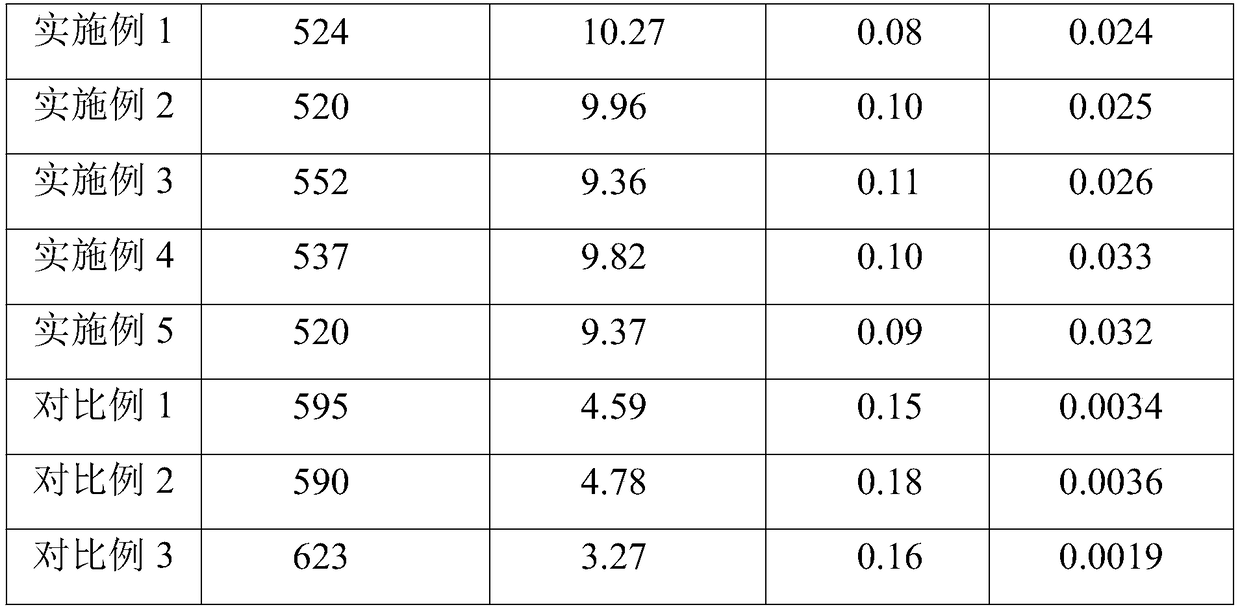Self-insulation lightweight concrete wall
A lightweight concrete, self-insulation technology, applied in the field of concrete and its preparation, can solve the problems of bulkiness, micro-cracks, damage, etc.
- Summary
- Abstract
- Description
- Claims
- Application Information
AI Technical Summary
Problems solved by technology
Method used
Image
Examples
preparation example Construction
[0019] The present invention also provides a method for preparing the self-insulating lightweight concrete wall, comprising the following steps:
[0020] (1) After the first polymer powder and the second foaming agent are mixed uniformly, they are spun to obtain polymer fibers; then polymer fibers, chain extenders, graphene oxide and carbonate are placed in the second polymer In the powder, react at 60-100°C for 15-60 minutes, and finally calcinate at 150-180°C for 30-50 minutes to obtain composite porous fibers;
[0021] (2) Mix fly ash, cement, fine sand, diatomaceous earth, light aggregate, composite porous fiber and waste rubber under mechanical stirring conditions to obtain a powder mixture;
[0022] (3) After uniformly dispersing the water reducer and other additives in water, add them to the above powder mixture, and continue to stir for 60-150s to obtain a mixed slurry; finally, add the first foaming agent to the mixed slurry, and stir evenly to obtain Concrete precur...
Embodiment 1
[0030] (1) Spin after mixing 24kg polyethylene terephthalate powder and 6kg 4,4-oxobisbenzenesulfonyl hydrazide evenly to obtain polyethylene terephthalate fibers, and the spinning process is: The power supply voltage is 30KV, the spinning environment conditions are temperature 25°C, relative humidity 60%; the needle spacing of the multi-needle spinning unit is 15cm, and the number of spinning unit needles is 45; take 22kg polyethylene terephthalate fiber, 20kg ethyl Diol, 12kg of graphene oxide and 3kg of sodium carbonate are placed in 12kg of polyethylene terephthalate powder and reacted at 80°C for 45min to obtain polymer fibers, which are then calcined at 160°C for 40min to obtain Composite porous fibers;
[0031] Soak 4kg of waste rubber particles in an acidic solution with a pH of 6-6.5 for 4 hours to obtain acidified rubber, mix the acidified rubber and 10kg of maleic anhydride in water evenly, and stir and react at 100°C for 1 hour to obtain modified rubber;
[0032] ...
Embodiment 2
[0036] (1) A, 20kg nylon 6 powder and 2kg 4,4-oxobisbenzenesulfonyl hydrazide are mixed and spun to obtain nylon 6 fiber. The spinning process is: power supply voltage 30KV, and the spinning environment condition is temperature 25°C, relative humidity 60%; multi-needle spinneret needle spacing 15cm, spinneret number 45; take 18kg nylon 6 fiber, 24kg 1,3-butanediol, 10kg graphene oxide and 2kg potassium carbonate In 10kg of nylon 6 powder, react at 80°C for 30 minutes to obtain polymer fibers, and then calcinate the polymer fibers at 150°C for 50 minutes to obtain composite porous fibers;
[0037] Soak 3kg of waste rubber particles in an acidic solution with a pH of 6-6.5 for 3 hours to obtain acidified rubber, mix the acidified rubber and 9kg of maleic anhydride in water evenly, and stir and react at 120°C for 1 hour to obtain modified rubber;
[0038] (2) 25kg of fly ash, 35kg of cement, 15kg of fine sand, 12kg of diatomaceous earth, 5kg of polyethylene foam (1-5mm), 10kg of ...
PUM
| Property | Measurement | Unit |
|---|---|---|
| particle diameter | aaaaa | aaaaa |
Abstract
Description
Claims
Application Information
 Login to View More
Login to View More - R&D
- Intellectual Property
- Life Sciences
- Materials
- Tech Scout
- Unparalleled Data Quality
- Higher Quality Content
- 60% Fewer Hallucinations
Browse by: Latest US Patents, China's latest patents, Technical Efficacy Thesaurus, Application Domain, Technology Topic, Popular Technical Reports.
© 2025 PatSnap. All rights reserved.Legal|Privacy policy|Modern Slavery Act Transparency Statement|Sitemap|About US| Contact US: help@patsnap.com


